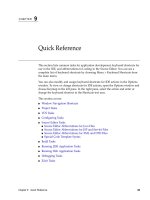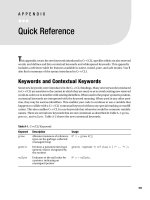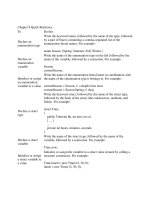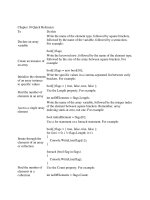Engineering Terms - English Japanese Quick Reference Dictionary
Bạn đang xem bản rút gọn của tài liệu. Xem và tải ngay bản đầy đủ của tài liệu tại đây (2.49 MB, 3 trang )
1
English-Japanese Quick Reference Dictionary: Engineering Terms
Introduction
This quick reference dictionary was compiled to assist the
engineering student or intern in learning vocabulary words that
would be helpful if the student found himself or herself working (or
studying) in Japan. It assumes the reader has a basic
understanding of the structure and grammar of the Japanese
Language, but such knowledge is not necessary to benefit from
the book. Words were chosen based on English vocabulary from
my own domestic work experience and input from students that
have traveled to and worked in Japan in the Engineering field.
Words from many different engineering specialties are included, as
well as some day-to-day or business terms that are used
frequently in a professional engineering setting. Words in the latter
category are separated out into a ‘basic words’ section for ease of
use.
At times, multiple entries of the same word are included.
Sometimes this reflects the fact that there are multiple Japanese
translations of the same English word. Other times, there are two
different Japanese words that are used for this entry, and their use
depends on whether the word is used in the context of job-related
communication or in the context of day-to-day conversations.
The format of each word entry is illustrated below:
Brief Definition Romanized Pronunciation
Part of Speech
English Word Japanese Equivalent
Engineering
Noun
工学
· The act of applying the principals of science
and mathematics to natural energy sources
for the benefit and growth of society.
koogaku
2
English-Japanese Quick Reference Dictionary: Engineering Terms
One final note concerning the Romanized Japanese Pronunciation:
The following English conventions were used:
▪ Double Consonants: “tt” ( ie. ワット = Watto)
▪ Long Vowels: “oo” (ie. ほそおどおろ = Hosoodooro)
▪ Two “n’s” next to each other: “n’n”
(ie. トンネル = Ton’neru, so it is not confused with a double
consonant.)









